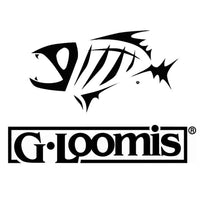First Cast to First Fish: Part 3 - The Gear
What About the Gear?
 Before you buy a fly fishing outfit it is helpful to know what you will actually be buying. Any reputable shop or decent instructor will be able to provide more details on these components.
Before you buy a fly fishing outfit it is helpful to know what you will actually be buying. Any reputable shop or decent instructor will be able to provide more details on these components.
The information offered here is relatively basic. For more in-depth suggestions on selecting a new outfit, including recommended weights, read our "Choosing the Right Gear" page. If you want to bypass all the details and just get started, we offer pre-assembled outfits in common weights at several price points. These are an excellent balance of price and quality and are ideal for anyone who is just getting started, on a budget, or looking for a backup outfit.
RodsFly rods are designated by weights, which are actually determined by the weight of line that a particular fly rod can cast. Rod and line weights go from 0 (pronounced “ought”) weight or smaller for very tight water and smaller fish up to 16 or 17 weights for huge blue water fish such as marlin and tuna. 3 weight through 12 weight rods are what you are likely to find in fly shops. The most popular rods in central Florida for those just getting started are 8 weight models for redfish and seatrout and larger bass and 5 weight rods for freshwater bass and panfish. 6wt and 7wt outfits are also good options.
Most modern fly rods are made primarily of graphite, integrated with a mix of other materials, including fiberglass, to give the rod specific qualities. Most fly rods have cork handles, with the quality of the cork generally improving with rod quality. Rods intended for larger fish and/or saltwater will have a fighting butt, an extension behind the reel that gives you something to brace against.
The reel foot is set up against the reel seat and locked into place by either one or two rings. The reel seats on some freshwater rods are made of wood, which looks great and adds some style but is not appropriate for salt. If you plan to use the rod in saltwater make sure the reel seat is made of aluminum, graphite or some other material that will not be affected by saltwater.
Fly rods are designed so that the reel hangs down underneath the rod when you are holding onto it. The line will come off of the bottom of the reel and run through the guides. The closest line guide to the reel, which looks a lot like a spinning rod guide, is called a “stripping guide.” Most larger rods have a couple of stripping guides. The guide at the very top is called the “tip top.” The smaller guides in between may be snake guides (they are she shape of a snakes coil and have attachment points above and below down the length of the rod) or they may be single foot guides (a ring with a single foot).
Fly LinesA fly line is a fairly complex combination of materials designed to load a fly rod and throw a fly easily and accurately over a range of distances. Fly lines are made up of a core and an outer plastic coating, which varies in thickness and density. The core can be either a single strand fiber, such as monofilament or, more commonly, woven monofilament or nylon. The taper profile of a fly line will determine how it casts and lays out on the water.
The weight designation of a fly line comes from the actual weight, in grains, of the first 30’ of the line. An 8 weight fly line, the first 30’ of which will weigh around 210 grains, will match ideally with an 8 weight rod. Rods can be cast with lines both heavier and lighter than those for which they are designed but should function best with a line of the designated weight.
When starting out, the best line to purchase will be a standard weight forward floating model. A weight forward line is made up of a thin tip, which increases in diameter through the front taper to a thicker belly. The rear taper brings the belly down to a thin running line, designed to move through the guides easily without adding much additional weight. The weight of the belly, which is concentrated in the first 30 to 50 feet of a fly line, will allow the rod to load (bend) well so you are able to make an effective cast. When you lay a cast down on the water, the loop of your forward cast should straighten out and typically land gently on the water. It is the front taper that allows this to happen. The thicker line carries more energy than the thinner tip. Energy will dissipate on your presentation cast as the thick belly grades down to the thin tip. The line will carry enough energy through to the end to deliver your fly to the target but not so much that the fly smacks the water and spooks the fish.
Fly lines are manufactured for a specific range of conditions, including temperature. A line that will work well in 95 degree heat will probably be stiffer than ideal when temperatures are in the 60’s. A line made for cold water trout fishing will be sticky at 85 degrees. Because of this, your equipment will perform better if you change your line to match the season, especially if you will be fishing in saltwater. A braided monofilament core bonefish, redfish, or general saltwater line with a harder coating works great in the Florida summers, while a bass line or standard cool weather line will be a better choice when the weather cools down in the fall. While having a separate line for the cooler season is ideal, in reality most people in our area just stick with a tropical line all year and deal with some extra stiffness on colder days.
While a regular weight forward floating line is ideal to learn on and is the standard line used by most fly anglers, there are a number of other lines that can be very useful in helping you to enjoy your time on the water and to catch more fish. As mentioned above, the plastic coating, which makes up the outer shell of a fly line can vary both in thickness and in density. The density can be affected by the addition of a number of materials such as air bubbles to increase floatation or lead or tungsten to help the line to sink.
Lines are available in a variety of densities other than floating. Intermediate lines, which are very useful for blind casting in saltwater, surf fishing, and a variety of other applications, will sink very slowly. These lines are ideal in windy conditions since they go just below the surface of the water and get out of the wind. Sinking lines are available in a variety of densities and configurations. A full sinking line has its applications but can be very difficult to manage. A more common approach is to connect a section of thin running line to a sinking line creating a shooting head line. The sinking line can be anywhere from a couple feet up to 30’ or more. Keep in mind that a 30’ sinking shooting head will not reach a depth of anywhere near 30’. A good rule of thumb is that you can get to depth of roughly 1/3 of the length of the sinking section of your line. Most, if not all, of the major line manufactures make an assortment of integrated (one piece) sinking shooting head lines.
Leaders and TippetAfter your fly line comes your leader. An average leader will be around 9’ long and taper from a thick butt section, which attaches to the front end of your fly line, down to a thinner midsection, and finally to the thinnest section, the tippet, to which you tie a fly. This taper allows for an efficient transfer of energy with just enough force to turn the leader over. The tippet is the weak link, the part that will break if you snag a tree or hook a fish too big to handle. It should be sized to the size fly you are throwing as well as the fish you are targeting. While you can tie your own leaders, it is a lot easier to start with factory tapered leaders. In a later section we will discuss some knots for tying on a fly and adding new sections of tippet to lengthen your leader.
If you plan to target bass and panfish a 9’ to 10’ 10lb or 12lb leader is a good place to start. For inshore saltwater with and 8wt rod, start with an 9’ to 10’ 12lb saltwater leader. If you expect to hook snook, baby tarpon or other species with abrasive mouths, you will want to use a leader with a short section of 25lb to 30lb fluorocarbon “bite tippet” at the end, to which you will tie the fly.
Fly ReelsReels are important but are secondary to the rod and the line. Your rod and line will determine how your setup casts and whether it matches your casting style. As long as you get a quality reel that balances your outfit and will do the job required, you will be in good shape. There is a wide variety of reels available to match any budget. The better reels will be made from machined aluminum which, when cared for correctly, is very resistant to corrosion.
Get a reel sized for the rod and line you are pairing it with. The weight range a reel is made for is not always obvious from the name or information on the reel. A fly shop will be able to help you choose an appropriate size.
You will most likely want to buy a large arbor reel, meaning that the center of the spool is pushed out, giving you a larger diameter and increased pickup speed. Because fly reels are direct drive, you only get one revolution of the spool for each revolution of your hand on the handle. A large arbor reel helps you bring in line more quickly when a fish turns and runs towards you. It also helps reduce line memory since the line will be in larger coils than on a similar reel with a smaller arbor.
Drag styles and surfaces vary widely among fly reels, and reels are available with sealed drags, open drags and semi-sealed drags. All work well and are largely a matter of personal choice. The caveat is that if you are a kayak angler, like to fish the surf, or for whatever reason, you regularly dunk your reel in the water, you should strongly consider a sealed drag reel.
Buy Some Gear
Now that you’ve taken a class and done some practicing, or hopefully at least had a chance to try out a friend’s rod and reel, it’s time to get a setup of your own. Avoid buying gear for the fishing you want to be doing or see yourself doing when you are more advanced. Instead get a setup you will use on a regular basis. Our "Choosing the Right Gear" page offers some insight on how to make a good choice.
If you get into fly fishing, this will probably not be the only rod you own. Different types of fishing require different equipment, and as your cast develops the rod action you prefer may change. By buying an outfit you will use regularly near home you will be able to spend more time on the water and will develop your skills more quickly. Once you have gained some proficiency you can pick up a second outfit for an upcoming trip or a more difficult species you have been looking forward to targeting.
You don’t need to start out with top-of-the-line equipment. In fact, we recommend starting with something in a lower to middle price range. One key to always improving your fly fishing ability is to always use gear that is better than you. Fortunately, there is a tremendous variety of high quality rods, reels and lines available at varying price points.
While any fly shop, including Orlando Outfitters, will appreciate a newcomer to the sport buying a $2,000 outfit, $250 to $500 will get you a very usable outfit that will serve you well for years. We offer several levels of outfits in the most common weights that we feel are the best mix of quality and price. We suggest starting with something like these.
If you want to spend more money, we recommend upgrading the reel. A high end reel will likely have a place in your arsenal as long as you fly fish. Your rod preferences are likely to change over time, with the greatest change happening in the first few years. Getting a mid-priced rod to start out and upgrading to a high end rod in a couple years, when you can really tell the difference, makes a lot of sense. Your original rod will make a great backup, and you can loan it to friends who are interested in learning to fly fish.














